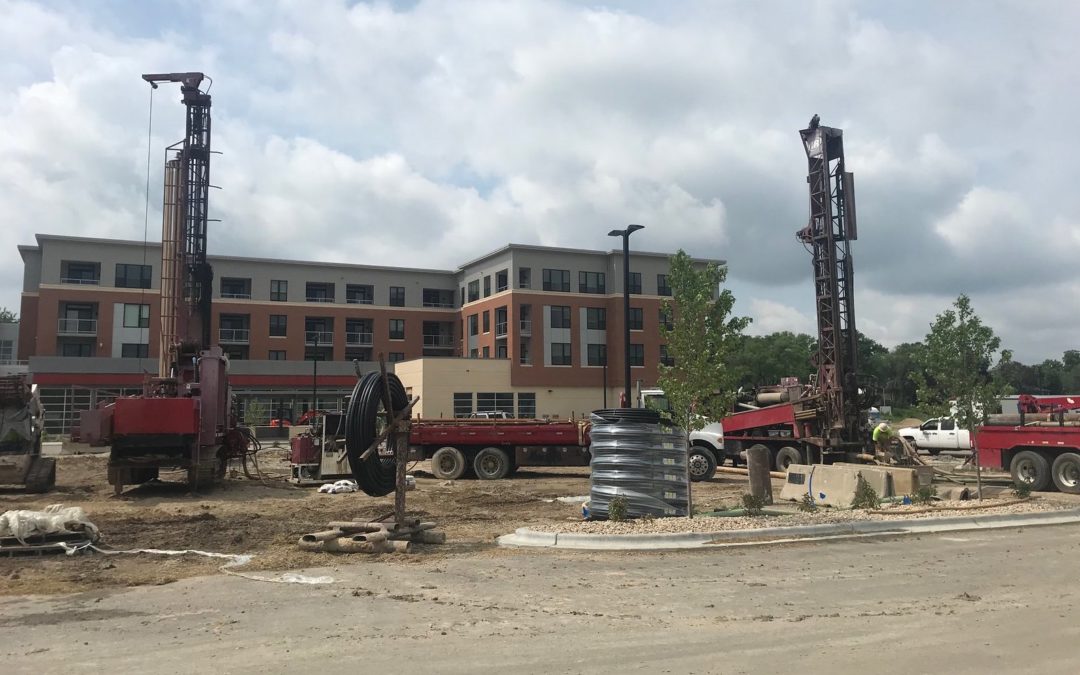Madison Public Library leaders and OPN Architects staff, who serve on library’s design team for the new Pinney Library, identified numerous sustainability goals as they planned the Pinney space. One of these was to reduce heating and cooling loads on the environment, which led to the purchase and installation of a geothermal system. This type of system is expected to lower annual heating and cooling costs by 25 to 35 percent. In conjunction with solar panels, the geothermal system will help the library reach net zero energy use for its space over the long term.
The geothermal heating system uses the Earth as a natural heater to generate reliable, low-cost renewable energy. Even in Wisconsin’s extreme weather, geothermal heating pumps operate well with the planet’s constant underground temperature. Installation for the geothermal field, which is located beneath the parking lot on the north side of the library, began June 17. The system is comprised of 21 400-foot-deep pipes ranging in diameter from 1.25 inches to 3 inches; when complete, the pipe system will extend for 3 miles underground! The pipes are filled with a propylene glycol water mixture that is heated or cooled by the earth, then circulated to the building.
In the winter, the earth is used to heat water in the piping, which is then transferred to the interior space by a heat pump, where the warm water is used to heat the cooler air of the building. This works in reverse in the summer: The cool earth is used to cool the water circulating through the piping placed underground. On the interior of the building, the cool water is used to lower the temperature of the warmer air. Because the earth is assisting in heating and cooling the space, electric loads are significantly reduced.
This special HVAC section will be a long-lasting investment, as geothermal heating pump indoor components have a lifespan of around 25 years — a decade longer than those of traditional systems. It also has the potential to help the library attain Leadership in Energy & Environmental Design (LEED) Gold Certification.


